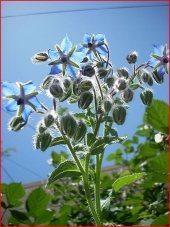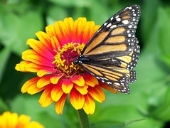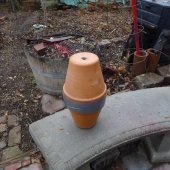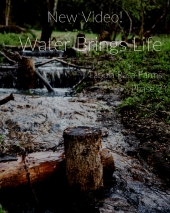Late winter and early spring are bloom times here for lots of native wildflowers and shrubs. Madrones and manzanitas bloom very early and attract whatever insects are out. Among shrubs, rosemary, ceonothus, coyote brush are the favorites, In the garden, the best early nectar sources I have found are overwintered brassicas. If you grow kale, turnips, Asian greens, or arugula, these bolt at slightly different times and are outrageously full of bees and all manner of little fliers. You can see why--a bed full of them smells like honey even from a distance. For pest control in spring, I just throw around a bunch of old brassica and cilantro seed in fall.
High summer is more of an issue for insects in the west, because most of the landscape has dried up, except gardens. It really pays to plant food for parasitic wasps and other beneficials then. That list above is all good, and I would pay particular attention to tiny white or yellow flowers in flat or round umbels--alyssum, dill, fennel, cilantro, and overwintered carrot, parsley, celery, etc. Ammi is a really good one because it blooms late. I always include alyssum, because it attracts predators that target thrips, which can devastate tomatoes in dry weather. Here is an easy approach:
https://www.quailseeds.com/store/c38/Seed_Collections_and_Kits.html#/
The Agroecology dept at UC Santa Cruz has done a lot of research on how to fight symphylans, which are tiny centipede-like critters in the soil that eat plant roots, sometimes with devastating results. They suggest that providing habitat for ground beetles--you know those lumbering black ones--makes the difference. They found that the beetles, which hunt at night, can go about 20 feet from their daytime hiding places. So they put little piles of old sunflower stalk, twigs, rock, etc, every 20 feet.
Straw mulch is also good. Grassy weedy areas can host ground beetles, but they are not pollinator hosts, since grasses are wind-pollinated (or self pollinating, like wheat) and provide no nectar for pest-eating wasps and beneficials. I have found that grasses are host to both fungal diseases and thrips in my area and more of a problem than a help. Instead, I provide hedgerows of currants or other berries, perennial herbs, etc, as well as piles of branches for beetle and gopher snake habitat.

 10
10




 4
4




 5
5




 8
8




 3
3




 4
4




 1
1




 7
7




 3
3




 2
2




 1
1




 2
2




 3
3













